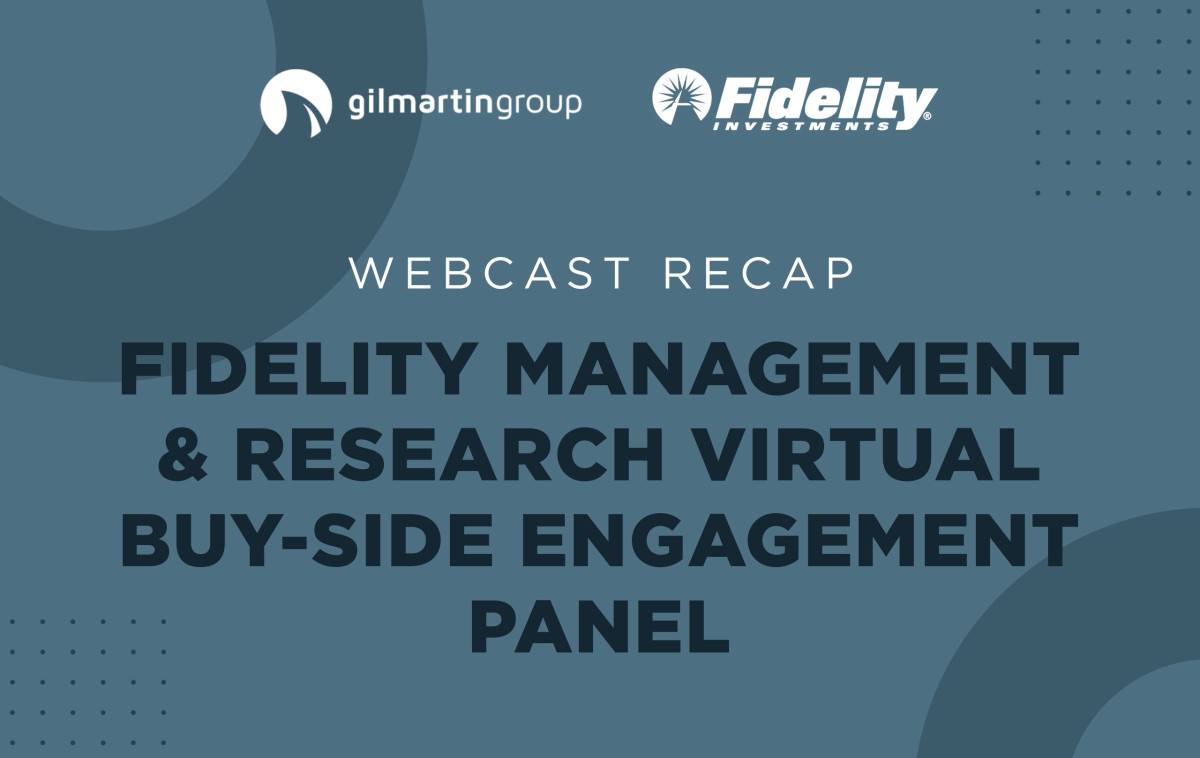Fidelity recently hosted a webcast focused on engaging with investors. The panel featured a Q&A session with several portfolio managers and analysts who offered specific tips on what matters, what doesn’t and how to position yourself for success when interacting with the investment community broadly and with asset managers at Fidelity, specifically.
Here are our top 10 takeaways:
- Most Effective Ways to Engage with Asset Managers at Fidelity
- Be proactive. Utilize bank-sponsored conferences to introduce yourself – propose an in-person interaction at a conference or an introductory call.
- It is helpful if you can quickly provide a high-level overview of the business and comment on industry trends to start the conversation
- Have organic interactions. Reach out when there are material changes outside of the earnings cycles. Most analysts at Fidelity expect conversations at least once per quarter, with a hybrid of in-person and virtual meetings.
- Use Fidelity’s IR Portal. Through the IR portal, you can see who covers what company and find their contact information. If your stock is held in multiple Fidelity funds, your analyst from the portal will be your point of contact
- Management is Integral to Investment Decisions
- For all companies, but particularly emerging growth companies, the management team is an integral part of the investment decision for asset managers at Fidelity
- As stewards of capital, you are a big piece of the equation when it comes to value creation
- Fidelity looks at management incentives, specifically are incentives aligned with the creation of shareholder value and the timeframe that’s considered
- Your IR Site Matters
- The investor relations site matters – don’t overlook the importance of having information well organized and easily accessible
- Have your presentation, key performance indicators, and company summary in a visible and prominent location on the site
- If you have supplemental data, such as information you refer to on calls or trends that you want to highlight, link it directly to the IR site
- Include any ESG data that you have and/or your sustainability report on the IR page
- Structural Dynamics Do Matter in Investment Decisions
- Average trading volume, the float, and market cap all factor into structural considerations and considerations in investment decisions
- From Fidelity’s perspective, for illiquid or structurally challenging companies, the expected return threshold needs to be materially higher given the risk profile
- Investment Criteria and Holding Periods for Fidelity Investments
- The holding period at Fidelity varies across strategies, but as a starting point, 2-3 years is typical
- When evaluating a longer (or shorter) holding period – asset managers consider several financial metrics, including past and expected ROE, ROIC, earnings to cash flow, valuation, and margin profile
- For small caps, your balance sheet is a key consideration when evaluating risk
- How Do You Look at Distressed Companies (i.e., in biotech)
- Portfolio managers tend to focus on understanding the maximum downside, whereas analysts also focus on the upside
- Capital structure and cash position/burn are important considerations
- Comments on Guidance
- Guidance is useful and helpful – but needs to be grounded in confidence and visibility
- In areas out of your control, or where you do NOT have visibility or confidence, Fidelity’s advice is not to try and guide
- You do not need precise on all metrics; high-level trends are helpful
- How Does Fidelity Use the Sell Side vs. Internal Research?
- Fidelity analysts and portfolio managers view the sell-side as their partner
- Analyst reports are very helpful when ramping up on a stock or serving as “feet on the street” in international markets
- View on ESG for Smaller Companies?
- Fidelity understands that small caps have less IR and ESG resources and that they should allocate resources to business growth and development
- For smaller companies, it is important to get any ESG information that is available on the IR site
- ESG is part of the investment mosaic and will be increasingly so going forward
- EXAMPLES: Who are the best companies from an IR perspective?
- ATKR: Very thoughtful about having robust, but concise data on their calls
- PTC: Releases the transcript and data ahead of the call and jumps directly into Q&A on the call
- ESG IR communications: PBH, TPR, WSM
- Companies with great investor decks: EHC, LHCG, AMED, CSWI, YETI, LGIH, FOXF
Management and Investor Relations teams must balance many stakeholders and dynamics in an ever-changing environment. Properly and fluently communicating company objectives to the buy and sell side in the context of the overall market Is a challenge we at Gilmartin embrace! Great partners like Fidelity help build lasting relationships, ensuring respect and strong communication. To learn more about Gilmartin Group and our offerings, please visit gilmartinir.com.
This blog post was co-authored with Fidelity Investments.

